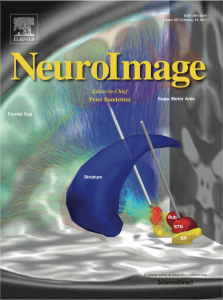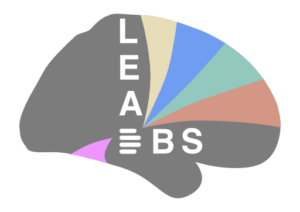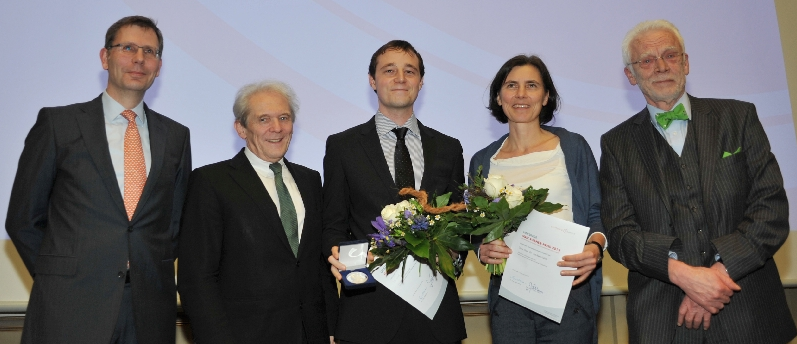LEAD-DBS rendering selected for coverart in NeuroImage
We are happy to share the current NeuroImage cover art with you, which shows a 3D rendering made with our toolbox (volume 107, 15 February 2015).
The accompanying text for the image is the following:
Depicted is a thr ee-dimensional reconstruction of deep brain stimulation electrode placements in a patient suffering from Parkinson’s disease. Using a novel open-source toolbox that is introduced in this issue of NeuroImage, the electrodes are modeled in their accurate position in the brain based on postoperative magnetic resonance imaging and using the accurate dimensions of the electrode lead model implanted in the patient’s brain.
ee-dimensional reconstruction of deep brain stimulation electrode placements in a patient suffering from Parkinson’s disease. Using a novel open-source toolbox that is introduced in this issue of NeuroImage, the electrodes are modeled in their accurate position in the brain based on postoperative magnetic resonance imaging and using the accurate dimensions of the electrode lead model implanted in the patient’s brain.
Using such a reconstruction of the stimulation setting, it can be determined, whether deep brain stimulation electrodes are accurately placed within the target structure – in this case the sensorimotor functional zone of the subthalamic nucleus. Moreover, the volume of tissue activated by the stimulation can be modeled using the actual stimulation parameters applied in the patient’s treatment.
Lastly, based on the volume of activated tissue that has been modeled for a certain patient, diffusion weighted imaging based fiber-tracking may be used to analyze the influence of the stimulation on the whole structural (and functional) connectome of the patient’s brain. This combined approach allows the researcher to study local effects of the stimulation (associated with the placement of the electrode within the target structure), as well as distant effects effects (associated with the whole-brain network influenced by the stimulation).


